Supporting a 600 km Brevet – Part 1

During our pre-riding the planned route for the Seattle International Randonneur’s “Mountain 600 km Brevet,” we realized that it was not safe to have riders descend from Windy Ridge at night. It would be too cold, and the road has big cracks that already had seen a rider crash during another brevet in daylight. Yet we did not want to cancel the brevet. Mark Thomas, our SIR president, saved the day by suggesting a substitute route via the North Cascade Highway that was already established. We felt good about that change, and moved on to figure out the ride support.
Even though randonneuring officially is an “unsupported” sport, organizing a brevet means manning controls and, usually, providing substantial food at an overnight control, where riders also can rest for a few hours during the brevet. Some randonneur brevets are run more like tours, with the organizers providing most of the food and drink that riders need throughout the day. In most cases, this requires hours of driving, and even more hours of waiting for riders to show up. We decided to run our brevet with only our bikes for transportation (i.e.: without cars), and provide substantial support only at the overnight control. Not only would this reduce our ecological footprint to almost zero, but it also emphasized the spirit of independence and adventure that makes randonneuring so appealing.
On Friday night, we left Seattle after dinner to ride 80 km (50 miles) to the start in Arlington. It was a beautiful, warm night, and after a long week of work, Ryan and I both enjoyed sprinting over the hills north of Seattle. At 10 p.m., we arrived at the hotel where the brevet was to start the next morning.
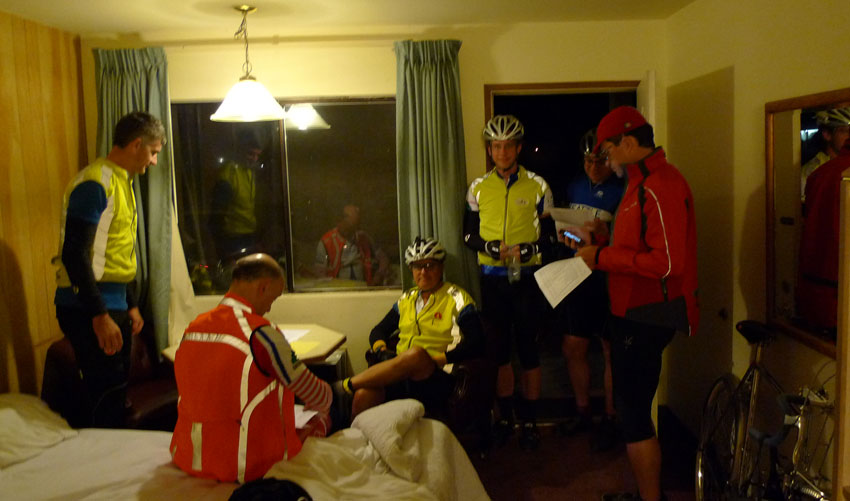
4:45 a.m. Five of the six riders are ready for departure. One calls to tell us he is running late (he forgot his helmet), but Ryan points out that the start will be open for another hour after the official 5 a.m. departure.
Ryan then rides off with the group. He will stay with the first riders and set up a secret control at km 90. (There is a shortcut via the main highway, and the control makes sure all riders take the scenic backroad.) I wait at the hotel. The last rider arrives at 5:15, and I send him on his way. At 6, I finally get to leave as well.
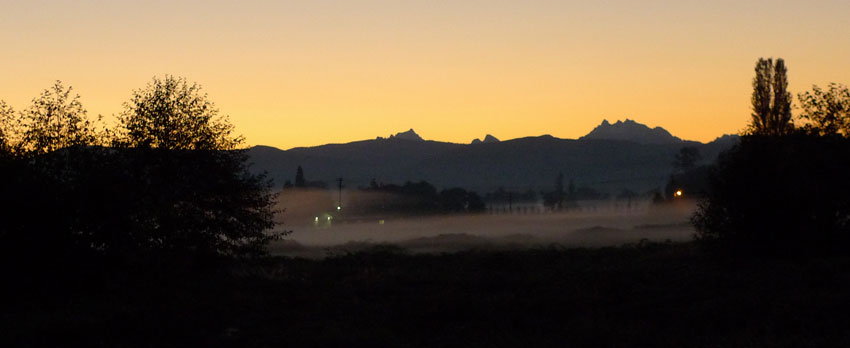
The sun is rising over the North Cascades, and the meadows are shrouded in fog. By the end of the day, I will be on the other side of these towering mountains. The orange glow makes it look like a promised land, and I am eager to get on the road.
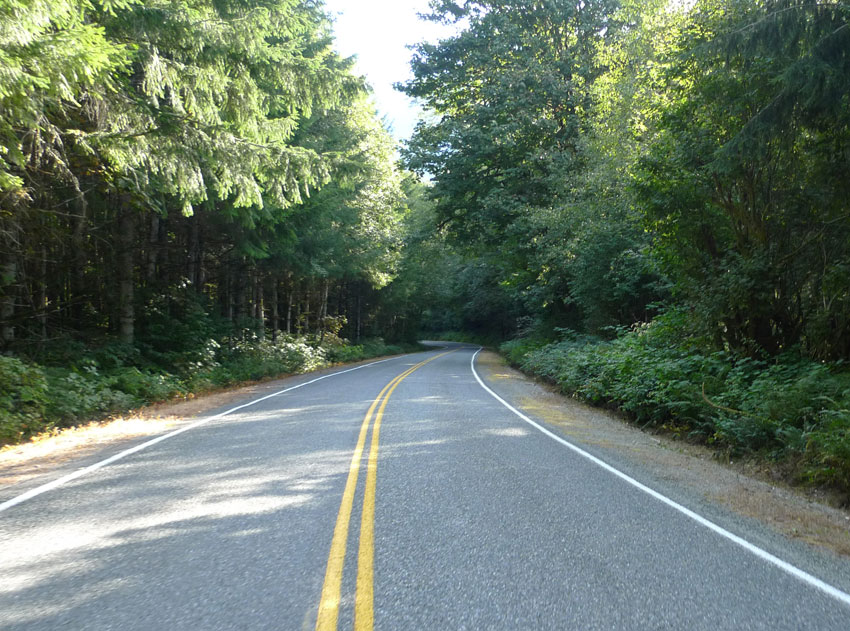
The miles pass quickly on these winding roads. This beautiful backroad had very rough pavement when I last rode it, on 32 mm tires. Today, on 42 mm tires, it feels smooth and fast, even though the pavement is the same.

Ryan, the lucky guy, enjoyed a full breakfast while waiting for me in Marblemount. While I stock up on supplies, he tightens the screws of his Berthoud saddle. Is he the only one who has them come loose? (Mine have never moved in years of riding.)
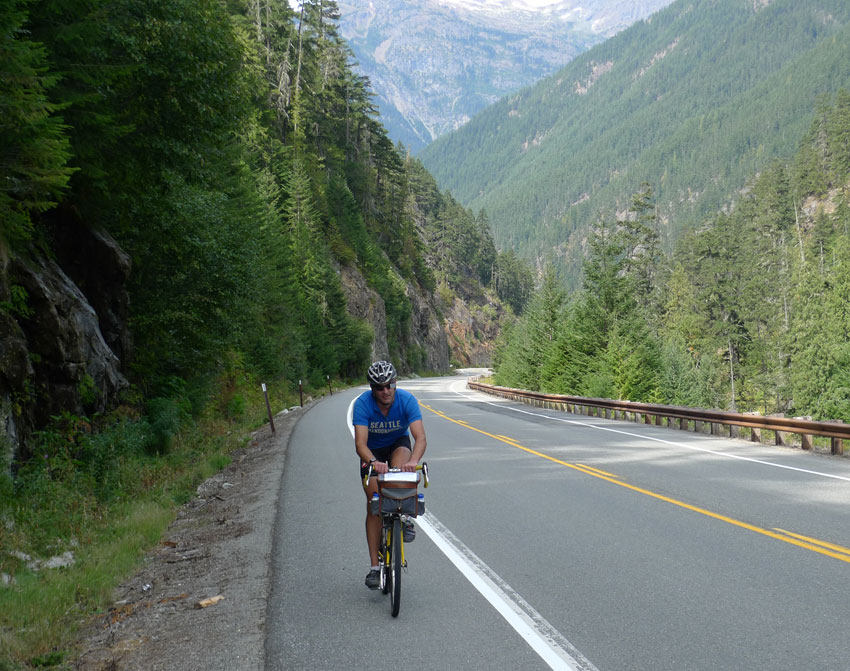
Soon we are on the road again. Rainy Pass is a long climb, but with scenery like this, we enjoy every minute of it. I run out of water on this hot, dry day, despite carrying three bottles. I refill at a spring near the top of the pass. (I know of the small risk of giardia, but dehydration seems worse.)
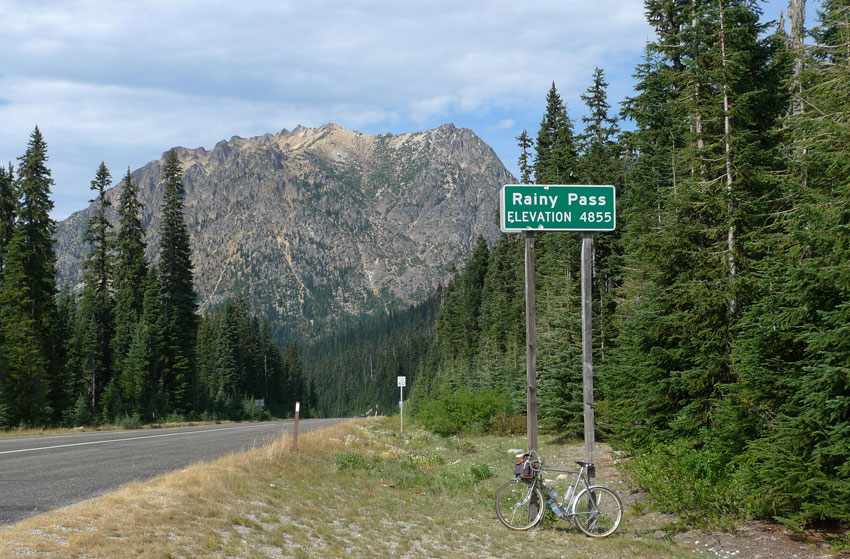
Rainy Pass is the first pass for the day. A quick descent follows, and already, the landscape is changing to the drier climate of Eastern Washington. Ryan points out a beautiful meadow on the slopes above (photo at the top of the post).

Neither of us has ever visited the lookout at Washington Pass. It’s off the main highway, and it adds a bit of climbing, but we are in no rush, and the view from the top is spectacular.
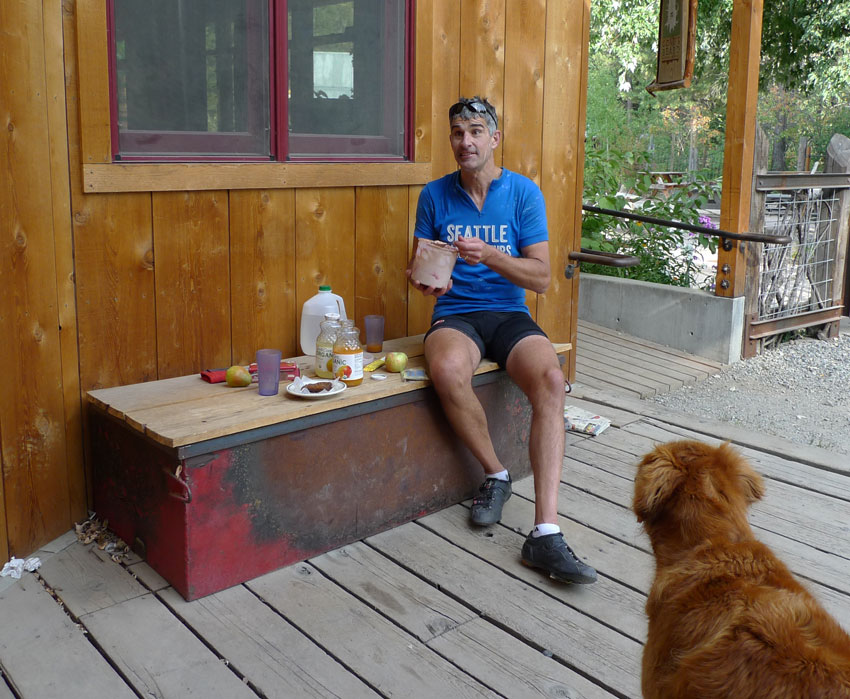
A quick descent brings us to Mazama with its lovely store, where we eat a very late lunch. Outside the store, we see a jug of water left behind by the riders who came before us. To our surprise, the jug sits on top of a huge container of ice cream. The ice cream still is frozen, so we know that the rider who left it must have been here not long ago. After the effort of the two mountain passes, Ryan enjoys the ice cream. The dog didn’t get any.
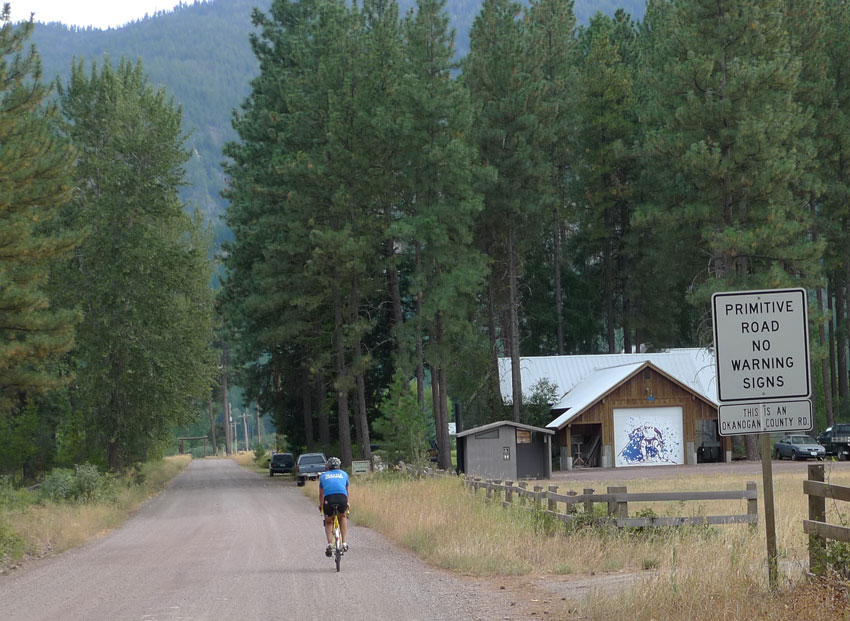
We did not have time to pre-ride the course, but when looking at maps, Wolf Creek Road looked like a promising alternative to the highway for the return leg. Now we are checking it out.
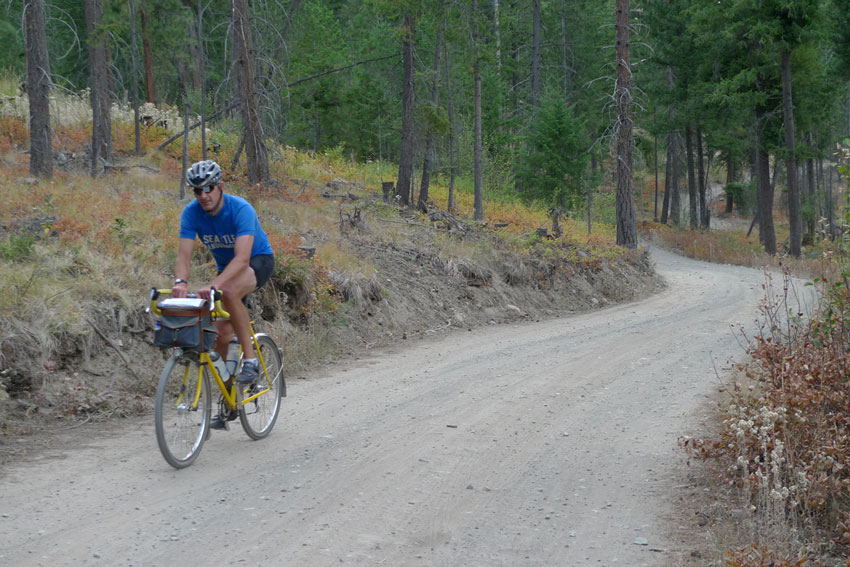
It is a lovely road that winds through the forest, and highly recommended for anybody passing through here. However, some of our riders are on narrow tires and will come through here at night. There are a few short sections with washboard, and we decide to strike this road from the course. We’ll have riders go over the backroad to Twisp that they took on the way out.
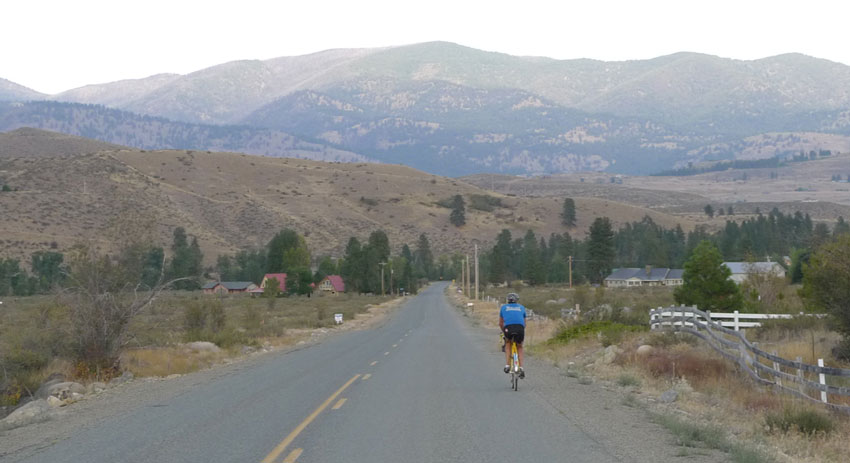
On pavement again, we descend toward Twisp on an empty road as the sun sets. We are having fun!
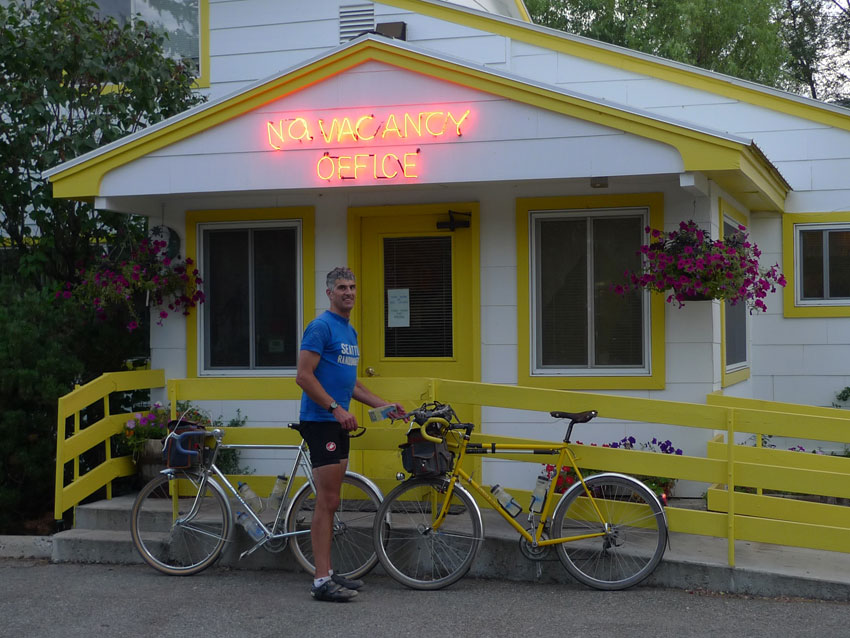
Our Motel in Twisp is a cute relic of the 1950s, even in name: “Idle a While Motel.” We quickly empty our handlebar bags and head out to shop for food.

How much food do you need to feed 5 hungry randonneurs? We decide to buy:
– 4 quarts soup
– 4 packages pasta
– 2 quarts orange juice
– 2 quarts lemonade
– 2 quarts V8
– 2 liters Coca-Cola
– chips and salsa
Our shopping basket is overflowing, but it all fits into our handlebar bags with some careful packing and strapping. Except the chips, which I carry in a bag on the handlebars, like the German ladies did with their shopping bags when I was a child. Then we buy even more food: sandwiches at a sandwich shop. We return to the motel to start cooking.
The first rider arrives at midnight, the others around two in the morning. They eat, sleep for a few hours, then leave in the early hours of the morning. Apart from a package of pasta, all the food is gone! We catch a little more sleep before heading out as well. The story of the return trip will follow in a separate post.


